So just what are the secrets to growing a big healthy crop of delicious cucumbers?
Cucumbers are one of the most versatile crops a home gardener can grow. They are perfect for slicing & dicing, and turning into delicious homemade pickles too! (See : Grandma’s Homemade Icebox Pickle Recipe)

But to end up with all of those delicious cucumber treats, you first have to be able to raise healthy, productive plants.
And with the simple cucumber-growing secrets below, that is exactly what you will be doing this year – all with ease!
How To Grow Cucumbers – The Simple Secrets To Success
It All Begins With Great Soil
What is the most important secret of all when it comes to growing cucumbers? Let them grow in the soil they love best!
Cucumbers thrive on rich, fertile and well-drained soil. And one of the best ways to provide that is to add in generous amounts of compost at planting time.
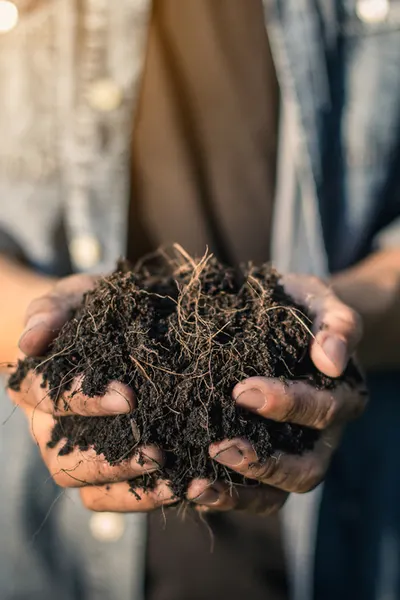
Compost is the perfect soil additive for growing healthy cucumber plants. It’s rich, nutrient-filled humus provides a big boost for plants. But it also helps to retain moisture to the roots too.
Mix in two to three cups of compost in each planting hole. To boost soil fertility and structure even more, add in a 1/4 to a 1/2 cup of worm castings to planting holes as well.
Organic fertilizers such as compost and worm castings help ensure there are plenty of nutrients on hand for the roots to absorb. And both compost and worm castings are excellent for retaining moisture too. In fact, they do so at a rate more than twenty+ times their weight!
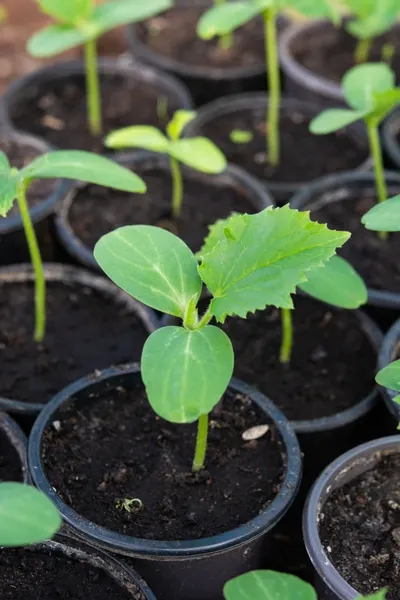
When finished planting, mulch around the base of each plant with a cup or two of additional compost. Not only will it help repel weeds and conserve moisture, but it will slowly fertilize plants as it breaks down.
Remember, the better the soil, the better the crop!
Plant With The Morning Sun In Mind
Where you plant your cucumbers is a big key to success as well. Cucumbers need generous amounts of sunlight to perform at peak production levels.
In addition, they need those rays to stay healthy too!
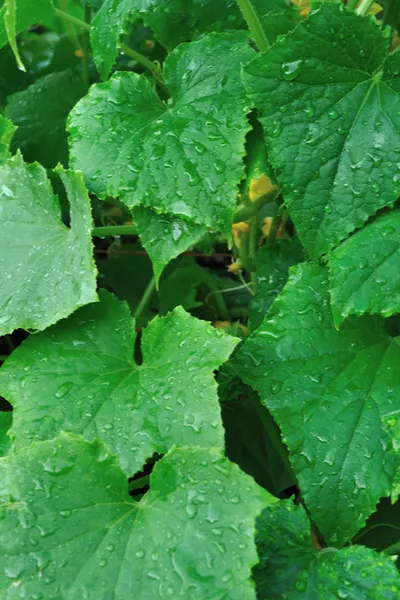
Choosing a location that receives early morning sun is a big key to long-term success. Cucumbers easily fall victim to mildew. And keeping plant foliage from staying too wet from overnight dew is important to keeping mildew at bay.
Early morning sun is the perfect remedy for drying off plants gently. It also helps plants ripen fruits at a faster rate as well.
Adding In More Mulch
When it comes to growing cucumbers with massive success, mulching heavily is another big key. And that means mulching more than just with the little compost ring mentioned above.
Place a few inches of straw or shredded leaves 12″ to 18″ around the base of each plant.
Mulching cucumber plants has several huge benefits for your crop. Not only does it help keep competing weeds at bay, a few inches of mulch also helps control fluctuations in the soil temperature.
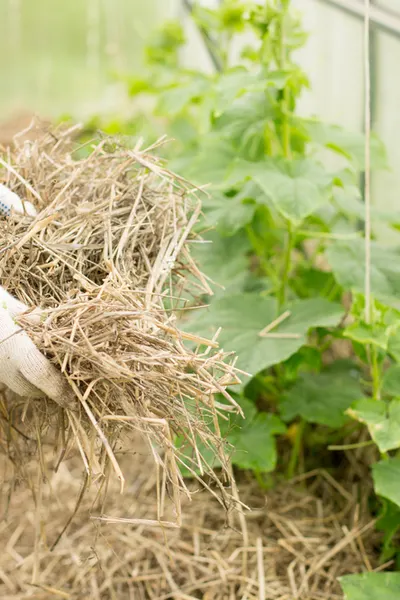
And the benefits don’t stop there.
It also helps keep soil borne disease at bay. The protective mulch layer keeps soil from splashing up on leaves when watering, or during heavy rainfalls. Soil that can contain mildew and mold spores that will damage and even kill plants.
But maybe most importantly of all, mulch helps the roots of cucumber plants retain moisture. Moisture that is key to staying productive!
Prevent Plant Overload
This is one secret that is often overlooked by gardeners. Cucumber plants need to be harvested on a regular basis to keep plants producing at peak levels.
Plants overloaded with too many cucumbers will begin to stop producing new shoots and bloom. In some cases, it will stop a plant’s production entirely.
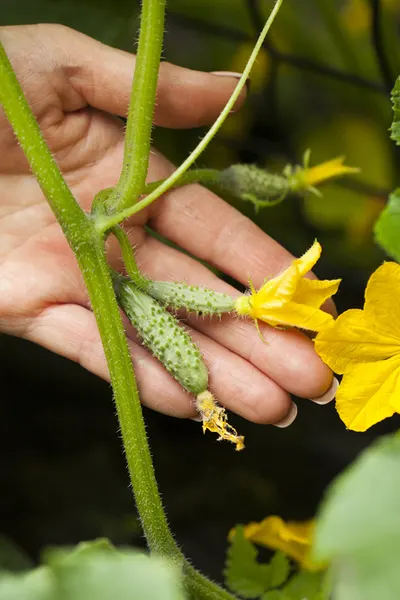
When a plant becomes overloaded, it begins to convert all of its energy to maturing the crop, and not to producing more flowers.
How To Grow Cucumbers – Picking The Right Variety For Your Space & Needs
There are two main types and varieties of cucumber plants: Cucumbers can be grown in bush or vining plants, while the cucumber fruits can be for slicing or pickling.
What you plant and where you plant will determine how you should plant. Here are a few great guidelines to follow for each:
Bush varieties are compact plants that are easily contained in smaller spaces. Vining styles on the other hand meander and grow at will. They lend themselves well to trellising, or even small fences or cages.
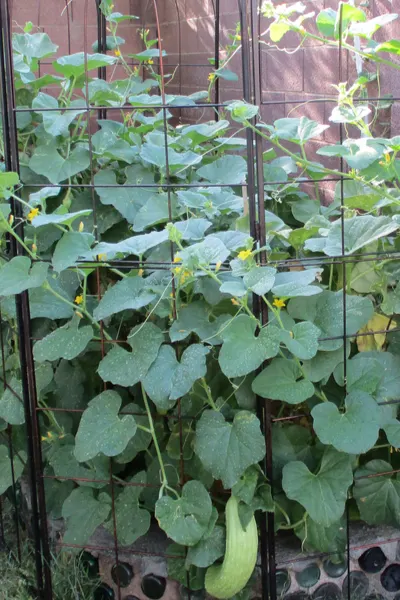
Vining cucumbers love to spread their foliage, and can take up 2 to 3 feet of garden space easily.
Both types have varieties that are more suited for eating fresh (slicing) or canning and making pickles. (pickling)
Seed Affiliate Links: Pickling Varieties : Boston Pickling cucumber. Calypso Pickling Slicing Varieties : Straight 8 cucumber.
How To Plant
When planting in a garden setting, it is best to plant on small mounds.
Planting cucumber plants on a slight mound helps to keep water from standing at the plant’s base. Create mounds with soil a few inches in height, and 12 to 18″ in diameter. (Mixing in compost with soil for the mound is a great idea here too!)
When planting, allow 3′ between mounds for vining varieties, and 18″ for bush style cucumbers.
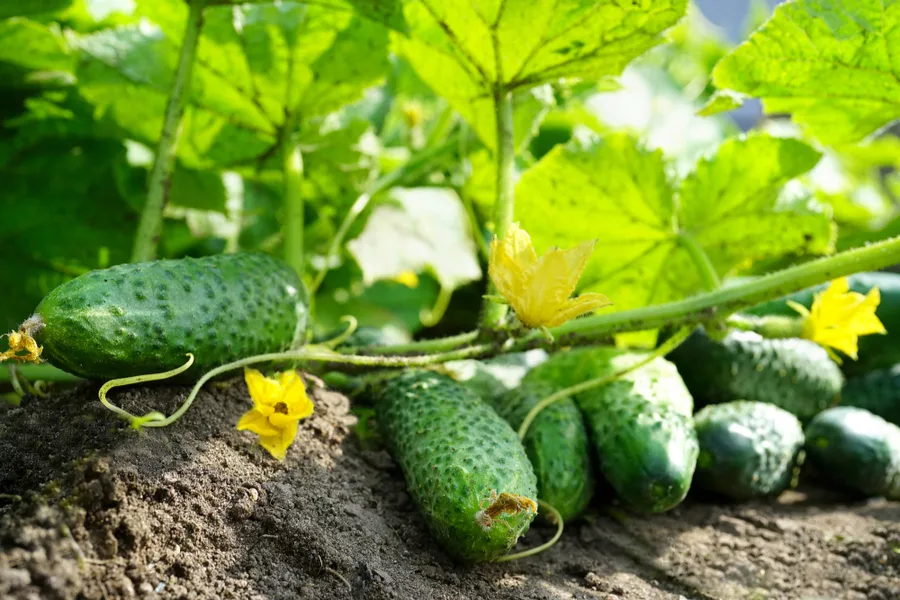
If planting in containers, use a high quality planting mix (16 qt. Espoma Organic Mix) with plenty of drainage. For vining plants, they can be allowed to trail down and over, or use wire or rope trellises to train up. However, the Bush varieties will not require as much support.
For container plants, regular fertilizing every few weeks is a must to keep the soil charged with nutrients. Compost tea or worm casting tea are both excellent choices. They also are perfect for using to boost plants in a garden setting too. See : How To Make Organic Liquid Fertilizers
Here is to growing your best cucumber crop ever this year!

This Is My Garden is a website dedicated to spreading the love and knowledge of gardening around the world. We publish two new garden articles each week. This article may contain affiliate links.
